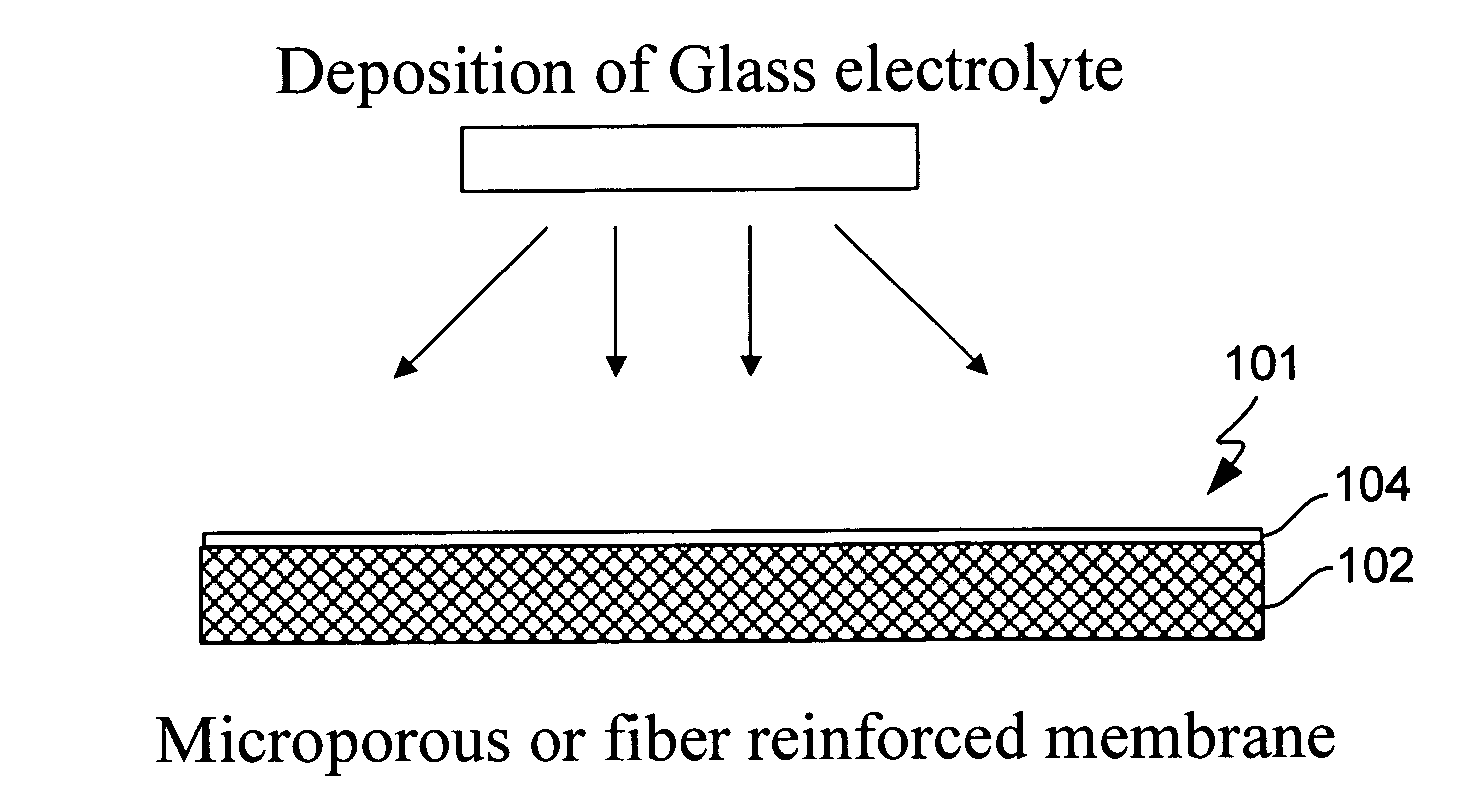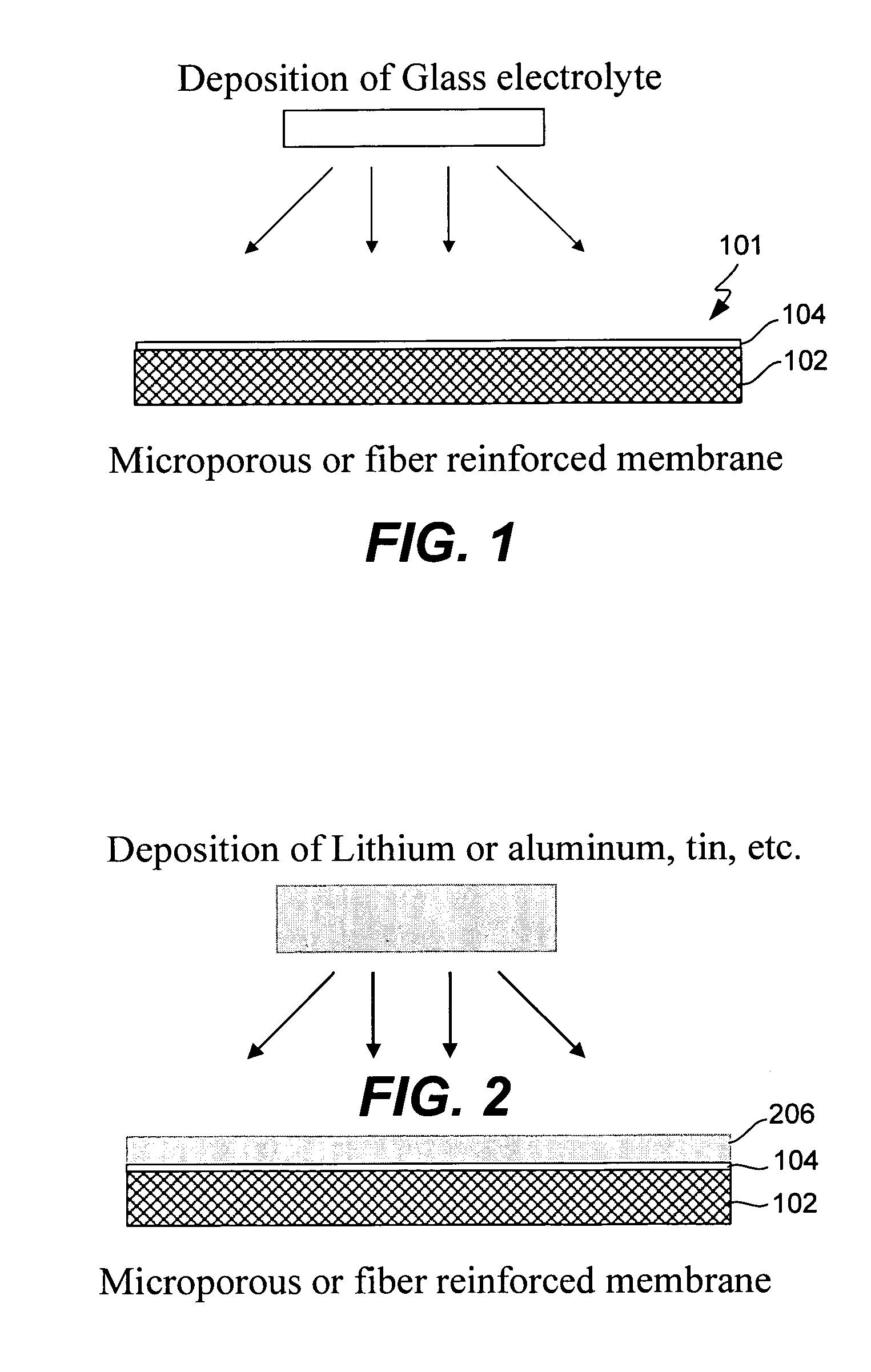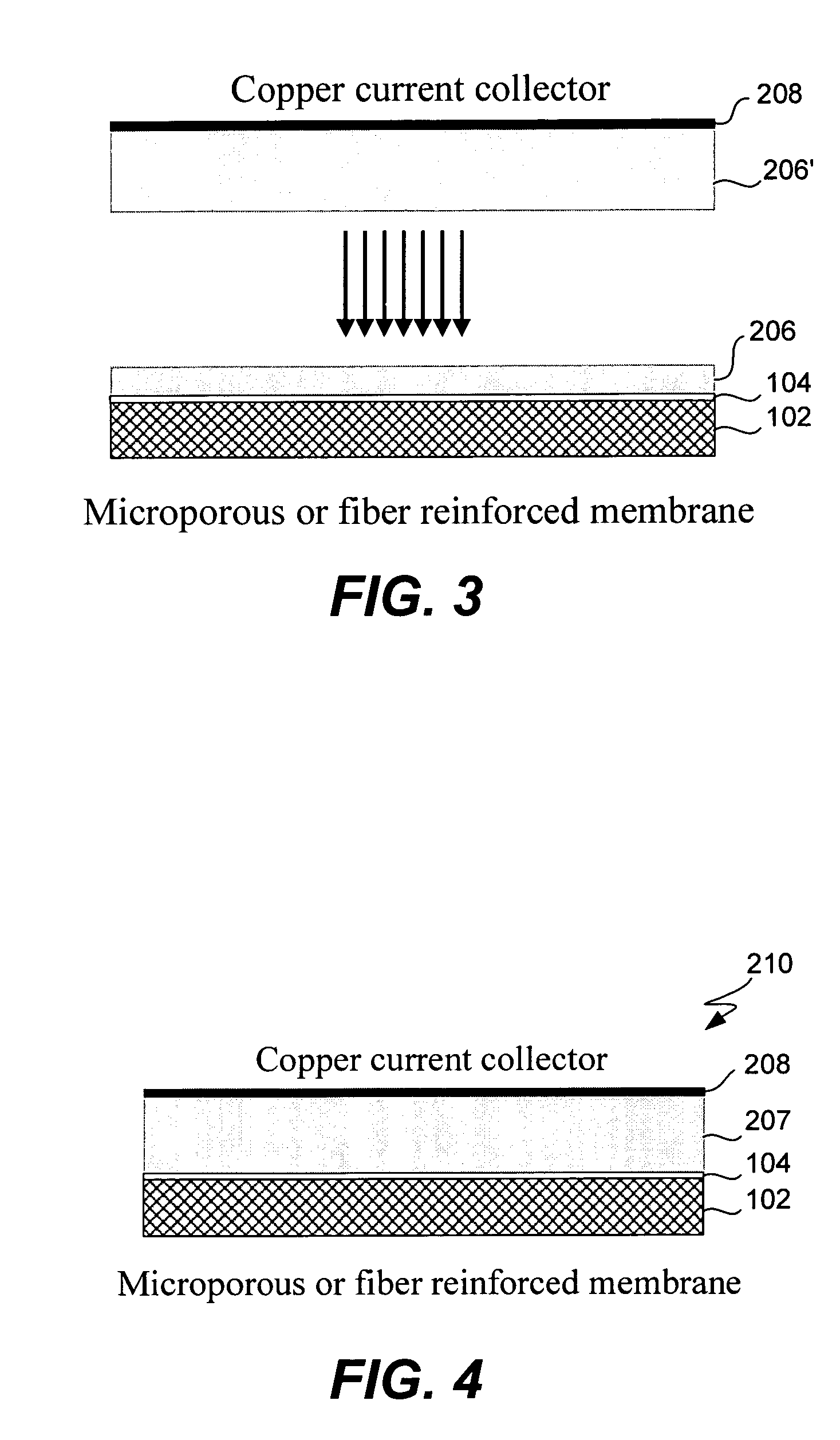Electrochemical device separator structures with barrier layer on non-swelling membrane
a technology of electrochemical device and membrane, which is applied in the direction of non-aqueous electrolyte cells, cell components, cell component details, etc., can solve the problems of failure of rechargeable lithium metal batteries
- Summary
- Abstract
- Description
- Claims
- Application Information
AI Technical Summary
Benefits of technology
Problems solved by technology
Method used
Image
Examples
example 1
Comparative Mechanical Stability
[0093]Samples of Gore-select membranes (PTFE reinforced Nafion per-fluoro-sulfonic acid polymer films of approximately 20 microns in thickness) obtained from W. L. Gore and Associates were coated with LiPON glass of approximately 0.4 microns thickness. The utility of a fiber re-enforced membrane to prevent swelling in the x-y (lateral) dimensions during solvent uptake, and add mechanical stability to a protective glass layer was then evaluated, as follows: The glass coated Gore select membranes were immersed in a solution of 90 / 10 vol % dimethoxyethane / dioxolane containing 0.5M lithium trifluorosulfonimide for approximately 2 hours. The membranes were then dried under vacuum and examined with a scanning electron microscope (SEM). FIGS. 6A and B show scanning electron microscope (SEM) imaging (at increasing magnification from left to right) of a fiber-reinforced membrane having a lithium-ion conducting glass coated on its surface before (6A) and after ...
example 2
Electrochemical Properties
[0095]In order to demonstrate that dimensionally stable membranes in accordance with the present invention can be used to fabricate functional electrochemical cells, glass coated Gore Select membranes were laminated onto lithium foil (Cypress Foote) and tested in laboratory cells. The cathode was a high surface area carbon black impregnated into a carbon fiber paper (Technical Fiber Products). Active sulfur was loaded into the cells as dissolved polysulfide species in a liquid electrolyte. The cells were tested at 250 uA / cm2 for both discharge and charge. The result, depicted graphically in FIG. 8, demonstrates that lithium foil laminated with an ion-conducting glass that was coated onto a reinforced membrane is capable of reversible redox in a Li—S cell.
PUM
| Property | Measurement | Unit |
|---|---|---|
| thickness | aaaaa | aaaaa |
| thickness | aaaaa | aaaaa |
| thickness | aaaaa | aaaaa |
Abstract
Description
Claims
Application Information
 Login to View More
Login to View More - R&D
- Intellectual Property
- Life Sciences
- Materials
- Tech Scout
- Unparalleled Data Quality
- Higher Quality Content
- 60% Fewer Hallucinations
Browse by: Latest US Patents, China's latest patents, Technical Efficacy Thesaurus, Application Domain, Technology Topic, Popular Technical Reports.
© 2025 PatSnap. All rights reserved.Legal|Privacy policy|Modern Slavery Act Transparency Statement|Sitemap|About US| Contact US: help@patsnap.com



